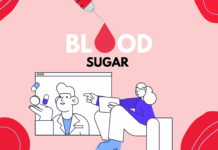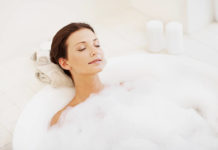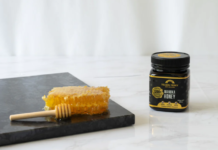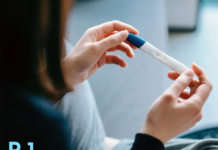Wrinkles are a natural part of the aging process, but many individuals seek ways to diminish their appearance and maintain a more youthful complexion.
In this article, we delve into the science behind wrinkles, explore the factors that contribute to their formation, and unveil effective strategies to diminish wrinkles and promote a more youthful appearance.

Wrinkles
The Anatomy of Wrinkles
Exploring the different layers of the skin and how wrinkles form due to a combination of factors, including collagen and elastin breakdown, reduced skin cell turnover, and external influences.

Types of Wrinkles
Differentiating between fine lines, dynamic wrinkles, and static wrinkles, and understanding their causes and characteristics.
Factors Contributing to Wrinkle Formation
- Aging Process
The natural aging process is a significant contributor to wrinkle formation. As we age, the production of collagen and elastin (proteins responsible for skin elasticity and firmness) decreases, leading to the development of wrinkles and fine lines.
- Sun Exposure and UV Damage
Prolonged and unprotected exposure to ultraviolet (UV) radiation from the sun can accelerate the aging process and contribute to wrinkle formation. UV radiation damages collagen fibers and impairs the skin’s ability to repair itself, resulting in premature wrinkles.
- Lifestyle Factors
Certain lifestyle choices can impact the development of wrinkles
-
- Smoking: Smoking accelerates aging and damages collagen and elastin fibers, leading to the formation of wrinkles, particularly around the mouth (smoker’s lines) and eyes.
- Poor Nutrition: Inadequate intake of essential nutrients, vitamins, and antioxidants can impair skin health and contribute to the appearance of wrinkles.
- Chronic Stress: Prolonged periods of stress can promote the release of stress hormones, which may contribute to collagen breakdown and accelerate wrinkle formation.
- Facial Expressions
Repeated facial movements and expressions, such as smiling, frowning, or squinting, can cause dynamic wrinkles. Over time, these repetitive motions lead to the formation of permanent lines and wrinkles in specific areas, such as the forehead, around the eyes (crow’s feet), and mouth (smile lines).
- Environmental Factors
Environmental factors can contribute to the development of wrinkles:
-
- Pollution: Exposure to pollutants, such as air pollutants and cigarette smoke, can generate free radicals that damage collagen and elastin, leading to wrinkles.
- Harsh Weather Conditions: Extreme temperatures, low humidity, and harsh winds can dehydrate the skin and impair its natural protective barrier, promoting wrinkle formation.
- Genetics
Genetic factors can influence an individual’s predisposition to wrinkles. Some people may have a genetic tendency to produce less collagen or have skin that is more prone to wrinkling.
Strategies to Diminish Wrinkles

Skincare Ingredients
- Retinoids: Understanding the role of retinoids in stimulating collagen production, promoting skin cell turnover, and reducing the appearance of wrinkles.
- Antioxidants: Exploring the benefits of antioxidants, such as vitamins C and E, in combating free radicals and protecting the skin from oxidative stress.
- Peptides: Discussing the potential of peptides in promoting collagen synthesis and improving skin elasticity, thereby diminishing the appearance of wrinkles.
- Hyaluronic Acid: Exploring how hyaluronic acid helps plump the skin, reducing the appearance of wrinkles and enhancing overall hydration.
Sun Protection:
Emphasizing the importance of daily sunscreen application to protect the skin from harmful UV rays and prevent further wrinkle formation.
Moisturization:
Understanding how adequate moisturization helps improve skin elasticity, smoothness, and texture, thereby reducing the visibility of wrinkles.
Gentle Cleansing and Exfoliation:
Highlighting the significance of using gentle cleansers and incorporating regular exfoliation to promote cell turnover and reveal fresher, smoother skin.
Facial Massage and Facial Exercises:
Exploring the benefits of facial massage techniques and exercises in improving blood circulation, toning facial muscles, and reducing the appearance of wrinkles.
Non-Invasive Treatments
- Microdermabrasion and Chemical Peels: Discussing how these procedures help exfoliate the skin, stimulate collagen production, and improve overall skin texture.
- Laser Treatments and Radiofrequency: Exploring the role of laser and radiofrequency technologies in stimulating collagen remodeling and reducing the visibility of wrinkles.
- Dermal Fillers and Botulinum Toxin: Providing an overview of injectable treatments that can temporarily diminish the appearance of wrinkles by plumping the skin or relaxing muscles.
- Healthy Lifestyle Habits: Highlighting the importance of a balanced diet, regular exercise, stress management, and sufficient sleep in promoting overall skin health and reducing wrinkles.
Expert Advice and Common Myths
Seeking Professional Guidance: Encouraging individuals to consult dermatologists or skincare professionals for personalized advice and treatment options based on their specific skin concerns.
Debunking Myths: Addressing common misconceptions surrounding wrinkle reduction and dispelling popular myths.
Conclusion
Diminishing wrinkles and achieving a more youthful complexion is a multi-faceted approach that involves understanding the causes of wrinkle formation, adopting effective skincare practices, and making healthy lifestyle choices. Start your journey towards smoother, younger-looking skin today!
By Health Medici and GPT.



















